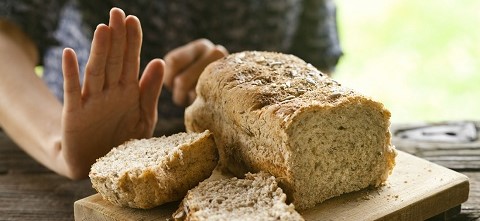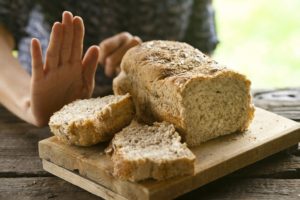

Bloating. Constipation. Gas.
These are just a few uncomfortable celiac disease symptoms prior to diagnosis.
Celiac disease is an autoimmune reaction to eating gluten, a protein found in wheat, barley and rye.
It kicks in when gluten causes a reaction in the small intestine that prevents someone from absorbing nutrients.
According to Lucy Frey, registered dietitian at Corewell Health, this is different than a gluten sensitivity, but can present similarly.
“Celiac disease is confirmed with testing and a biopsy of the small intestine,” she said.
Frey said it’s estimated that one in 133 people in America, or roughly 1% of Americans have gluten sensitivity or celiac disease. And almost one third of Americans follow a gluten-free diet.
“It’s a very trendy diet,” she said. “And there are many reasons for someone to try going gluten free. One is they think it’s healthier, but also often because they report some symptoms to gluten.”
Signs and symptoms
The most common symptoms of gluten intolerance are based around GI distress including vomiting, diarrhea and excessive gas. And in children, sometimes they will not gain weight as they get older or experience failure to thrive.
Frey said a diagnosis of celiac disease comes with the need to follow a strict lifelong gluten-free diet.
She said the most common things to avoid include bread, baked goods, cookies, however gluten can hide in any type of food, including spice blends and processed meats.
“Gluten is in so many different foods,” she said. “And labeling regulations are not strict around the term ‘gluten free.’”
She said labeling can be misleading, so it is important for people with celiac disease to understand how to navigate labels. And that “gluten free” doesn’t necessarily mean it’s safe for someone with celiac.
“What is most important for someone with celiac is to not limit yourself to ‘gluten free’ though,” she said. “Over time learn how to adjust a recipe to make it gluten free if you need to and this will expand your options.”
Simple swaps
One easy exchange: substitute couscous with rice or quinoa.
And even though baking gluten free can be tricky, Frey said there are some helpful websites and blogs with specific alternatives outlined.
She said when grocery shopping, personal preference can guide recipe swaps.
The diet is the treatment for this autoimmune disease and, fortunately, no medication is required.
“Side effects are an increased grocery bill, and more time and resources for buying and preparing food,” she said.
Frey said she discusses economic alternatives and cost-effective ways to follow a gluten-free diet with her patients as even trace amounts of gluten can cause issues and reactions in the small intestine leading to malabsorption.
“There are no cheat days on this diet,” she said. “Knowing how to navigate potlucks, parties and eating at a restaurant are important. It takes having a personal conversation with your registered dietician and knowing what the right choices are.”
Navigating resources
Frey said celiac disease can cause a lot of confusion for patients and her team in Pediatric Gastroenterology does their best to help patients and families understand the plethora of information on the topic.
“Trust that you can make it fit into your life by taking it one step at a time,” she said.
Frey has celiac disease herself, and said when she has pasta in a restaurant, she must make sure it’s been boiled in different water than other pasta. And French fries can’t be cooked in oil used with breaded items.
“I was diagnosed almost 20 years ago, long before any gluten-free trends, and my parents were ordering food for me out of a paper catalog at one point.”
She said she was malnourished and wasn’t gaining weight as the condition was less understood at that time and not as widely screened for.
“When I went gluten free, it changed my life forever,” she said. “I was full of energy, growing, gaining weight and feeling better. I never knew I was feeling so poorly until I was feeling good all the time.”
Frey said her pediatric dietitian made a huge impact on her career choice as a dietician.
“At the age of 14, I had to be very careful at reading labels,” she said. “And I experienced firsthand understanding the power of food as energy. I felt awesome all the time.”
Frey said she and her team now handle a bulk of the new diagnoses of celiac disease in West Michigan.
“One of the hardest parts of my job is debunking myths,” she said. “Patients sometimes get conflicting information from friends and family or the internet these days. But I do my best to keep them on track.”
Discover more from reviewer4you.com
Subscribe to get the latest posts to your email.





